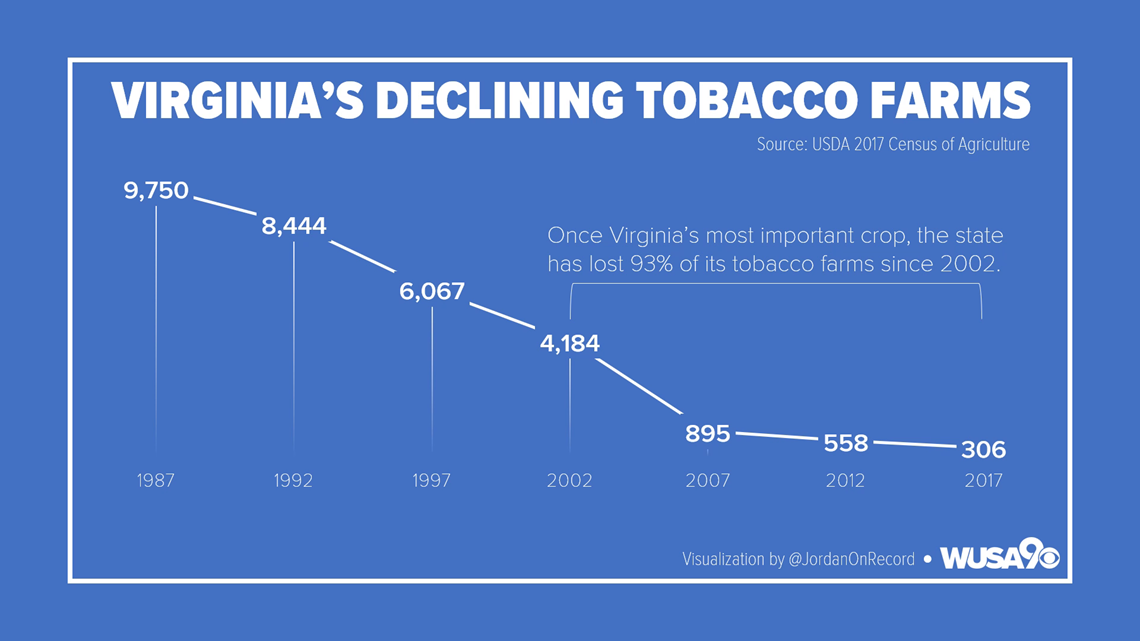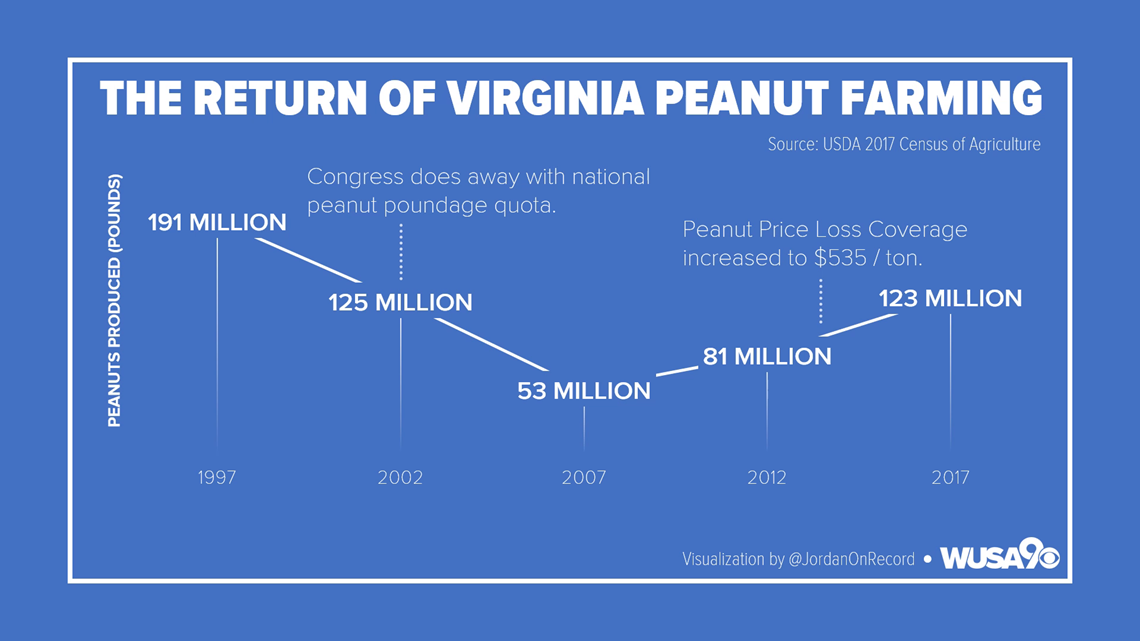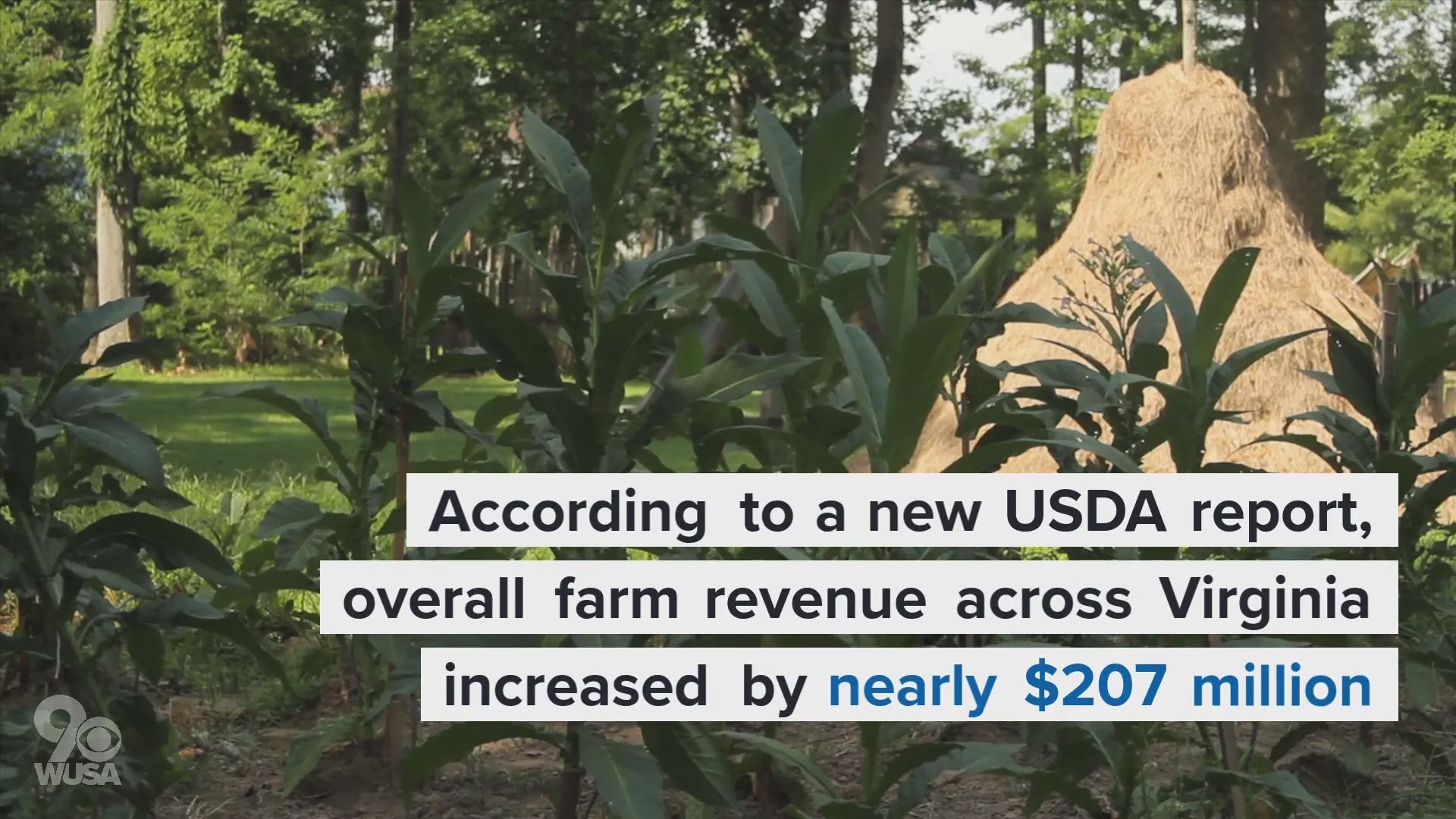WASHINGTON — Virginia’s agriculture industry is losing mid-sized farms even as revenues increase, according to new data released by the USDA.
On Thursday, the agency released its 2017 Census of Agriculture. The report is published by the USDA every five years and provides detailed information about agriculture across the United States. The numbers in the 2017 census predate any of President Donald Trump’s tariffs, which resulted in a drastic reduction in exports of soybeans to China.
According to the report, overall farm revenue across Virginia increased by nearly $207 million from 2012, the date of the last census, and 2017. That increase was driven heavily by livestock & poultry sales, which jumped $205 million from their 2012 numbers.
During that same period, Virginia lost a net 2,805 farms. That includes a loss of 3,182 farms in the of 50-500 acres range. That loss was offset by more than 1,200 new small farms in the 1-9 acre range, and eight new farms in the census’ largest category of 2,000-plus acres.
One of the largest crops to see farm losses was also one of Virginia’s most historically important: tobacco. Between 2012 and 2017, the state lost 45 percent of its tobacco farms. Over the past 20 years Virginia has lost 5,761 tobacco farms – or about 95% of all the tobacco farms it had in 1997. Overall tobacco production nevertheless increased by a modest 230,000 pounds compared to 2012.


On a brighter note for the state, agritourism increased by a whopping 169%, rising from $15.2 million in 2012 to $40.9 million in 2017. The state has also seen a huge increase in peanut production and a veritable hops farming boom. The 2012 census only recorded one hops farm in the entire state in 2012. As of 2017, that number had risen to 39.


Below, find a breakdown from the 2017 Census of Agriculture for specific Virginia crops and livestock:
Barley
- Loss of 57% of the state’s barley farms and 64% of the state’s acreage dedicated to barley.
- Virginia produced nearly 3 million bushels of barley in 2012. In 2017, it produced just under 970,000.
Corn
- Despite losing 300 corn-producing farms, the state produced almost 20 million more bushels of corn in 2017 – an increase of 58% from 2012.
- The farm loss came from those under 100 acres. The state actually saw an increase of 13.5% in farms greater than 100 acres growing corn.
- Corn produced for silage increased by 90,000 tons.
Soybeans
- Virginia produced a modest 3 million more bushels of soybeans in 2017 (rising from 578 million in 2012 to 600 million in 2017).
- The number of farms with less than 100 acres growing soybeans decreased by nearly 10% during that five-year period, while the number of farms above 100 acres increased by 6%.
Tobacco
- While the state produced 230,000 more pounds of tobacco in 2017 than 2012, it also lost 45% of its farms that grew tobacco.
- The amount of tobacco grown in Virginia has been cut by more than half over the past two decades.
Peanuts
- Virginia recorded a huge increase in peanut production, generating 47.7 million more pounds in 2017 than in 2012 – an increase of 58.7%.
Wheat
- Virginia’s wheat industry got walloped between 2012 and 2017, with overall production dropping by 4.8 million bushels and the number of large and small farms growing it dropping by 37%.
Vegetables
- Overall vegetable production increased from 1,656 farms in 2012 to 1,803 farms in 2017.
- Cantaloupes and muskmelons down from 633 acres harvested in 2012 to 481 in 2017.
- Garlic rose from 20 acres farmed in 2012 to 60 in 2017. Almost all of that garlic was harvested for fresh markets.
- Lettuce rose from 43 acres to 102 acres.
- Sweet potatoes up from 136 acres to 286 acres.
- Tomatoes down from 3,053 acres to 2,514 acres.
- Potatoes down from 5,423 acres to 4,213 acres.
Cattle and Calves
- Virginia lost 1,362 cattle operations between 2012 and 2017, with about 20,000 fewer head of cattle sold.
- The only size of cattle operation to see an increase was large farms with 5,000 or more head of cattle.
Hogs and Pigs
- Hog and pig operations increased from 919 in 2012 to 1,244 in 2017, an increase of 35.3%. The value of the hog and pig industry increased from $67.7 million to $96.2 million.
- The number of very small hog confinement operations actually increased, with farms with sales of 1-24 hogs rising from 675 in 2012 to 1,011 in 2017 (49.8%).
---
Jordan Fischer is a digital investigative reporter for WUSA9. Email him at jfischer@wusa9.com and follow him on Facebook and on Twitter at @JordanOnRecord.

